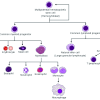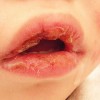Epidemic transmission of human immunodeficiency virus in renal dialysis centers in Egypt
Abstract
In 1993 an epidemic of human immunodeficiency virus (HIV) infection occurred among 39 patients at 2 renal dialysis centers in Egypt. The centers, private center A (PCA) and university center A (UCA) were visited, HIV-infected patients were interviewed, seroconversion rates at UCA were calculated, and relatedness of HIV strains was determined by sequence analysis; 34 (62%) of 55 patients from UCA and 5 (42%) of 12 patients from PCA were HIV-infected.… Read more

